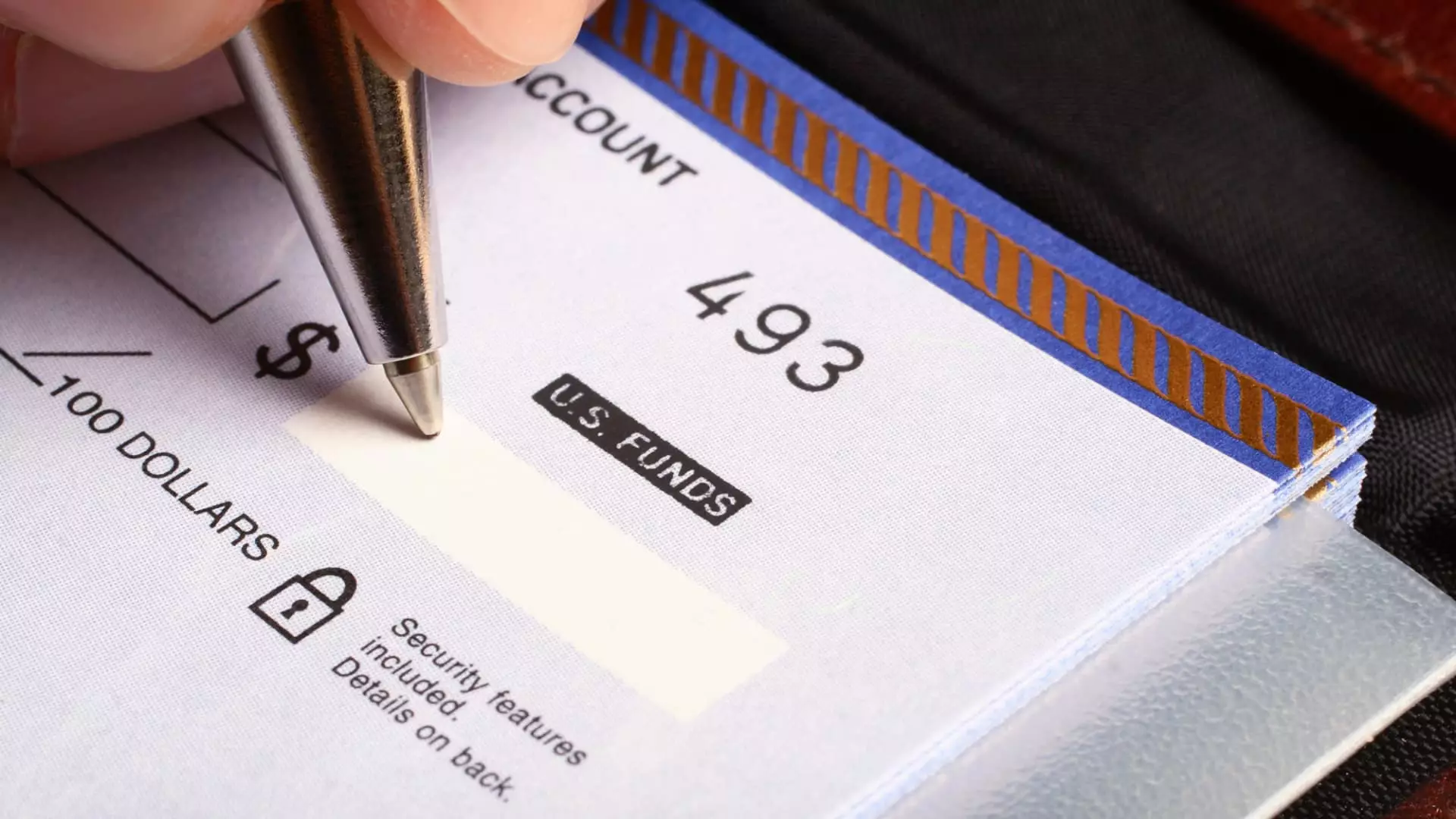In a digital age, the concept of paper checks is becoming increasingly archaic. The recent executive order by President Trump mandates an end to the use of paper checks in federal disbursements, signaling a shift towards modern electronic payment systems. This decision is not merely a bureaucratic exercise; it reflects an urgent need for the government to adopt practices that align with technological advancements and the evolving expectations of society. Relying on a method that has historically contributed to delays, inefficiencies, and fraud risks is no longer justifiable. The transition to electronic payments epitomizes the necessity for modernization in bureaucratic systems that have long been steeped in old traditions.
Critiques of the status quo suggest that paper checks have inherent flaws, such as the susceptibility to fraud and the risks associated with losing payments in transit. Each year, the United States suffers losses that amount to hundreds of billions due to fraudulent activities, much of which is attributable to checks. As we stand at the precipice of a cashless society, it is startling that federal agencies still cling to such an antiquated method of transaction. The executive order is not simply a move toward convenience; it is a vital step in safeguarding taxpayers’ money from criminal exploitation.
Inclusivity Versus the Exclusivity of Digital Payments
Despite the palpable benefits of electronic payments, one cannot overlook the critical aspect of inclusivity that must accompany this transition. While it is encouraging that various banking groups have welcomed the move away from paper checks, legislative action must ensure that vulnerable populations are not left in the lurch. Many individuals, particularly older Americans or those without internet access, may find themselves on the losing end of this technological leap. While the executive order provides for limited exceptions, the transition period until September 30 poses a significant challenge for these marginalized groups.
Updating our payment systems should not occur at the expense of the very populations that government programs are designed to protect. A balanced approach is needed, one that facilitates a smooth transition while providing assistance and resources for those who struggle with the rapid pace of digital evolution. Federal agencies must allocate resources to educate and support these communities in navigating the complexities of the new payment methods. It is essential that we do not reinforce economic inequalities through impulsive technological advancements that disregard the existing realities of all citizens.
Fraud: A Growing Concern in the Digital Age
On the flip side, it is imperative to consider the potential vulnerabilities that accompany digital payments. Though electronic methods are more secure than checks, they are not immune to the evolving tactics of cybercriminals. The risk of identity theft, online scams, and data breaches looms larger as we increasingly depend on digital platforms for our financial transactions. The government must recognize that while it is modernizing payment methods, it is also entering a new arena where traditional approaches to security may no longer suffice.
As we transition to a “check zero” world, balancing convenience with security should be a priority. Robust measures, including user authentication, monitoring mechanisms, and advanced encryption, must be implemented to mitigate these risks. Ignoring these aspects would be a grave error, as millions of Americans could suffer financially in the wake of increased online threats.
The Cultural Shift Towards Contactless Payment
The pandemic has significantly accelerated the cultural affinity for contactless and digital payments, rendering checks obsolete for many. Surveys indicate a dramatic reduction in check usage, with nearly half of Americans not writing a single check in the past year. Consumers have embraced the ubiquity and ease of mobile payment applications, indicating a generational preference for quick, hassle-free transactions. This cultural shift has profound implications for how businesses interact with their customers, leading many retailers to no longer accept personal checks.
The decline of checks emphasizes the importance of adapting to consumer behavior and preferences. The reality is that new generations have established their payment ecosystems, favoring platforms like Venmo and Zelle. In this environment, the endurance of checks represents an unwillingness to embrace modern consumer expectations. The government must not only adapt to these changes but also act as a catalyst for broader acceptance of digital transactions across all sectors.
The Final Nail in the Coffin for Paper Checks
The weight of history tells us that payment methods evolve with time, and checks are facing their inevitable demise. Since the 11th century, checks have served their purpose, yet they are now on an irretrievable path towards obsolescence. The statistics are striking; the decline in check use since the early 2000s is staggering, and as newer generations come of age, familiarity with checks is rapidly diminishing.
While there may be niche markets for checks, such as large transactions or donations, their role is increasingly peripheral. If society wishes to build a financial future that is efficient and secure, then the emphasis must be placed on innovative electronic solutions. It’s essential for policymakers to recognize that any lingering affection for paper checks needs to give way to a progressive framework for digital payments, reflecting the realities of the 21st century. It is time to seal the fate of paper checks and fully embrace the opportunities presented by modern technology.

